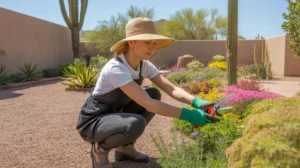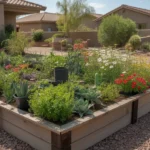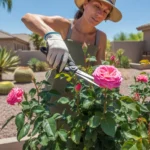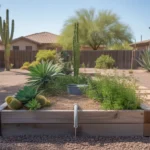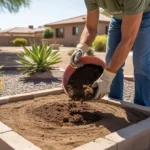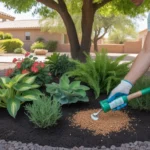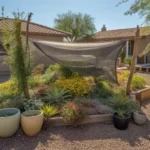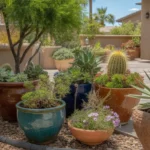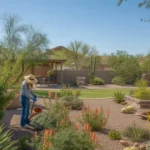Spring has sprung in the Southeast Valley, and it’s the perfect time to give your garden some extra TLC. With the right approach, you can help your plants thrive in the unique challenges of the Arizona desert. Whether you’re tending to a lush backyard oasis in Gilbert or cultivating a xeriscape paradise in Queen Creek, these spring gardening tips will set you up for success. 🌵🌸
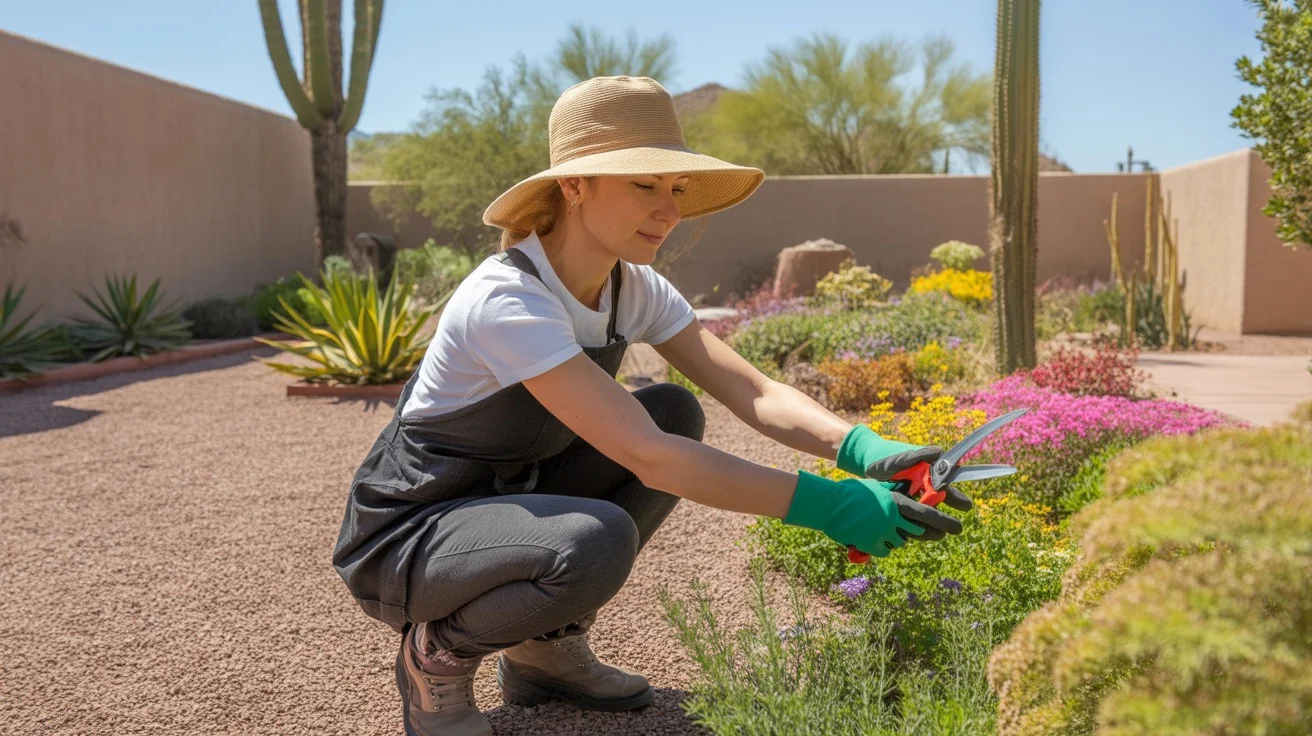
Embrace the Power of Mulch
One of the best things you can do for your Southeast Valley garden is to apply a generous layer of organic mulch around your plants. Mulch helps retain moisture in the soil, reduces water evaporation, and keeps roots cooler as temperatures climb. Aim for a 3-4 inch layer of shredded bark, wood chips, or straw.
Mulch also suppresses weed growth, saving you time and effort in the long run. As it breaks down, it adds valuable nutrients to the soil, promoting healthier plant growth. For an extra boost, consider adding a layer of compost beneath the mulch to supercharge your soil. 💪🌿
Water Wisely and Deeply
In the arid climate of the Southeast Valley, efficient watering is key to thriving plants. Deep, infrequent watering encourages roots to grow deeper into the soil, making plants more resilient to drought stress. Water early in the morning or late in the evening to minimize evaporation.
Install a drip irrigation system or use soaker hoses to deliver water directly to the root zone, reducing waste and preventing fungal issues on foliage. Be sure to adjust your watering schedule based on rainfall and temperature fluctuations. A moisture meter can help you gauge when it’s time to water. 💧🌡️
Prune and Tidy Up
Spring is the ideal time to prune many desert plants, including sage, brittlebush, and fairy duster. Trim away dead, damaged, or crossing branches to promote healthy new growth and improve air circulation. Avoid pruning frost-tender plants until after the last expected frost date in your area.
Tidy up your garden beds by removing any fallen leaves, spent blooms, or debris. This not only keeps your yard looking neat but also helps prevent pests and diseases from taking hold. Dispose of diseased plant material rather than composting it to avoid spreading issues. 🍂✂️

Plant Heat-Loving Varieties
When selecting plants for your Southeast Valley garden, choose varieties that thrive in the intense heat and sun of the desert. Native plants like penstemon, desert marigold, and globe mallow are excellent choices, as they’ve adapted to the local conditions over millennia.
For a pop of color, consider heat-tolerant annuals like zinnias, cosmos, and gomphrena. Succulents and cacti are also great options for low-maintenance, drought-resistant beauty. Group plants with similar water needs together to simplify care. 🌵🌺
Fertilize for Optimal Growth
Give your plants a nutrient boost by applying a slow-release, organic fertilizer in the spring. Look for a balanced formula designed for desert plants, or choose a specialized blend for specific plant types like citrus or roses. Follow package instructions carefully to avoid over-fertilizing, which can damage roots.
For an eco-friendly option, try making your own compost tea by steeping compost in water and applying the nutrient-rich liquid to your plants. This not only feeds your plants but also supports beneficial soil microbes. 🌱💪
Monitor for Pests and Diseases
Spring weather can bring an uptick in pest and disease issues. Keep a close eye on your plants for signs of trouble, such as yellowing leaves, wilting, or unusual spots. Common culprits in the Southeast Valley include aphids, whiteflies, and powdery mildew.
Address issues promptly to prevent them from spreading. Use integrated pest management techniques, such as handpicking insects, applying horticultural oils, or using neem oil for a natural approach. Avoid broad-spectrum pesticides that can harm beneficial insects like ladybugs and bees. 🐞🐝
By following these spring gardening tips, you’ll be well on your way to a thriving, vibrant garden in the Southeast Valley. Remember, every yard is unique, so don’t be afraid to experiment and find what works best for your space. With a little TLC and desert-savvy strategies, your plants will be the talk of the neighborhood. 🌵😎

